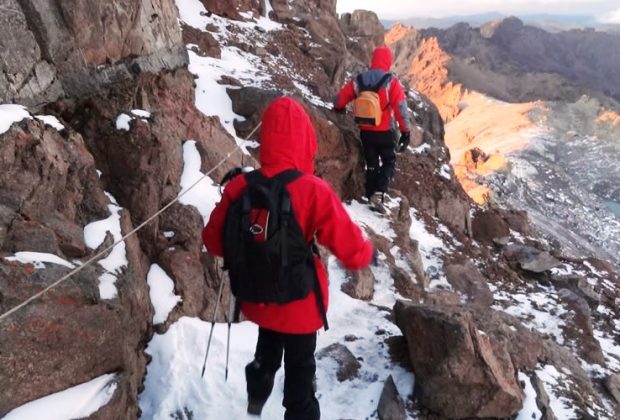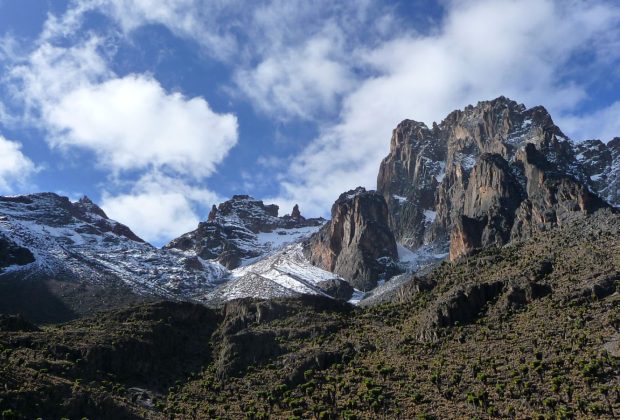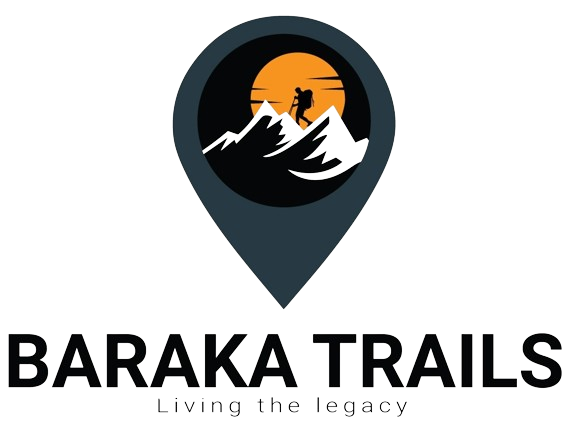6 DAYS MOUNT KENYA CLIMB



6 DAYS MOUNT KENYA CLIMB
Composed of numerous mountain peaks, each of which is roughly 5,000 meters in elevation, Mount Kenya is the tallest mountain in the country and second highest in Africa.
Heading up to to the top of this imposing igneous behemoth makes for an intense and incredibly rewarding challenge.
Over the course of our 6 days together, we will head up to one of the minor summits, Point Lenana (4,985 meters), enjoying spectacular views of the country’s diverse scenery as we go
We will also hike up to the mountain’s glacier and through fields of snow, which is quite a surreal feeling so close to the equator. Each day of the trip, we will also have the chance to see some of the local wildlife, including rock hyrax and sun birds.
The climax of the trip will be summit day.
Getting a pre-dawn start, we will reach Point Lenana for the sunrise and get a truly sublime experience. From the top, we should be able to see all the way to Kilimanjaro and get plenty of spectacular views of out surroundings.
After meeting up at the international airport in Nairobi, we will drive to Nanyuki town, crossing the equator en route to Sirimon Park gate. From here, we will spend 3 to 4 hours trekking to our first camp, Old Moses camp.
Starting first thing in the morning, we will hike for about 7 hours, up through the Mackinders Valley via the Liki North Ridge before arriving at Shipton camp.
A long day leading to the base of the high peaks, as you trek through the moorland of Mackinder Valley, with good views of the main peaks and a brief stop for picnic lunch. Total walking time today is approx. 7 hours, gaining 900m in altitude.
Dinner and overnight at Shipton’s Hut (4,200m).
We will start the day by hiking up to the north face of Batian, before continuing to the southwest and climbing up a series of switchbacks in the snow. Once we reach the Hausberg col, we will descend into the upper Hausberg valley before ascending a ridge and following a series of ledges to Mackinders camp.
From here, we will hike back down to Bandanas.
After breakfast, we will descend to Chogoria town and transfer to Nairobi
Not Included
- Laundry, sleeping bags, beverages/Drinks, accommodation before the trek and climbing gears
- International flights
- Visas to Kenya/ Tanzania
- Items of personal nature
- Any other extras not detailed in the above itinerary
Included
- Transfer to and from the base of the mountain
- Full board accommodation whilst on the trek.
- Meal plan as detailed
- Accommodations in camps/huts as per the itinerary
- Service of an English speaking professional guide, porters and skilled cook
- Treated water on the trek.
- On completion, successful climb Certificate
- All Transfers start and finish Nairobi
- What are the popular trekking destinations in Kenya?
- Popular trekking destinations in Kenya include Mount Kenya, the second-highest peak in Africa, and the Aberdare Range.
What is the best time of year for trekking in Kenya?
- The best time for trekking in Kenya is generally during the dry seasons, which are typically from January to February and from June to October. These months offer clearer skies and better visibility.
What are the different routes to trek Mount Kenya?
- Mount Kenya offers various trekking routes, including the popular Sirimon, Chogoria, Naro Moru, and Burguret routes. Each route offers unique landscapes and experiences.
Do I need prior trekking experience to trek in Kenya?
- While prior trekking experience is not always necessary, some treks, especially those to higher altitudes, require a good level of fitness and preparation. It’s essential to assess the difficulty level of the trek and train accordingly.
What permits or fees are required for trekking in Kenya?
- For trekking Mount Kenya, permits are required, and fees vary depending on the route and the park entry fees. It’s advisable to obtain permits in advance through the Kenya Wildlife Service (KWS) or authorized tour operators.
What should I pack for a trekking expedition in Kenya?
- Essential items for a trekking expedition in Kenya include sturdy hiking boots, appropriate clothing layers, a backpack, water bottles or a hydration system, sunscreen, insect repellent, a first aid kit, and a camera.
Are there risks associated with trekking in Kenya?
- Trekking in Kenya, especially at higher altitudes, carries inherent risks such as altitude sickness, unpredictable weather, and wildlife encounters. It’s essential to trek with experienced guides and adhere to safety guidelines.
What wildlife might I encounter while trekking in Kenya?
- While trekking in Kenya, especially in the national parks and reserves, you may encounter various wildlife species such as elephants, buffalo, antelopes, and a variety of bird species. It’s crucial to respect wildlife and maintain a safe distance.
Can I combine trekking with other activities in Kenya?
- Yes, many travelers combine trekking with other activities such as safari tours, cultural experiences, and beach vacations along the Kenyan coast for a diverse and enriching travel experience.
What level of fitness is required for trekking in Kenya?
- The level of fitness required depends on the specific trek and its difficulty level. While some treks are suitable for beginners with moderate fitness levels, others require a higher level of physical endurance and stamina. It’s essential to assess the trek’s difficulty and train accordingly.
